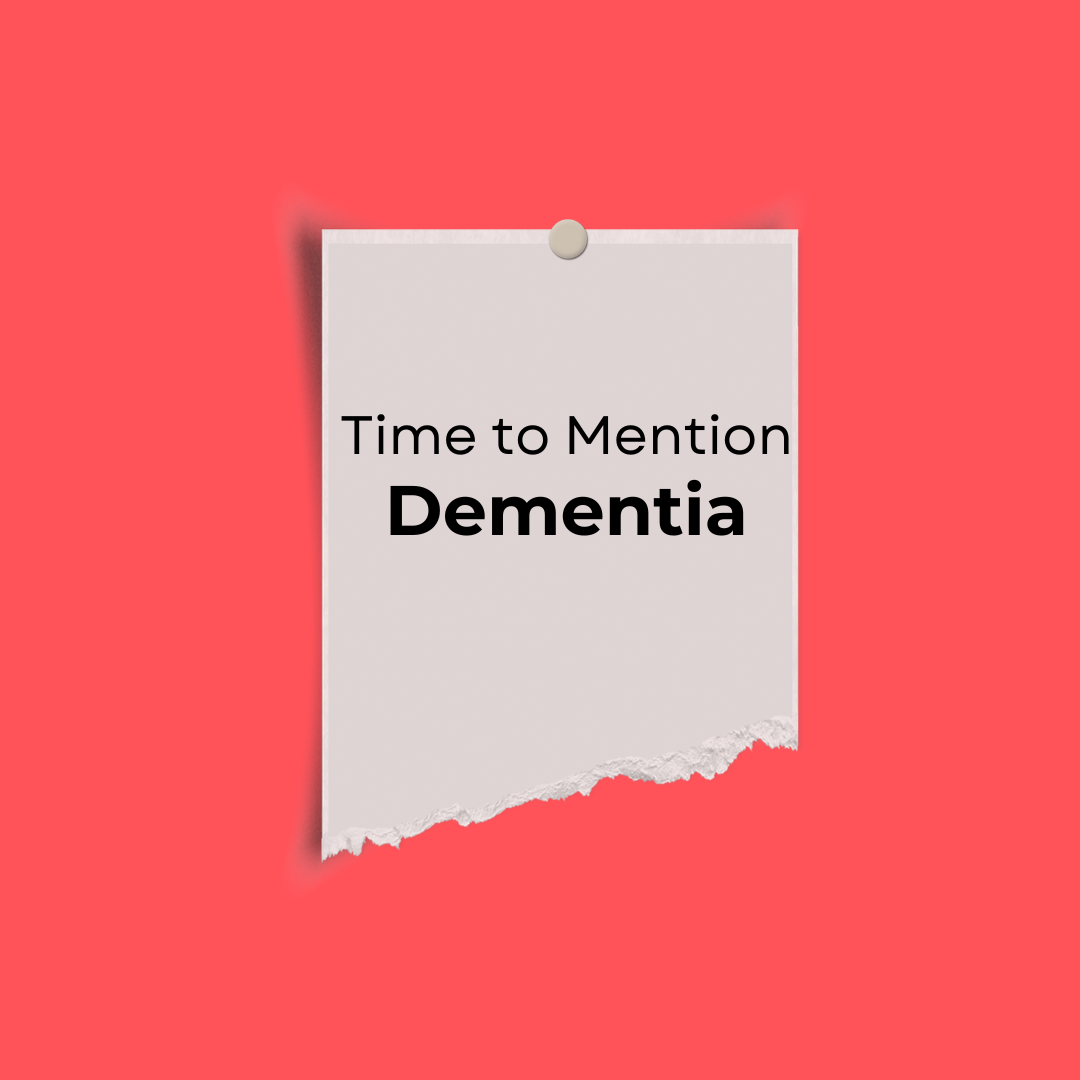Time to Mention Dementia
January is Alzheimer’s Awareness Month in Canada, and it is a great time to discuss bringing more awareness to Parkinson’s disease and Dementia.
Generally the first thing you think of with Parkinson’s disease are the physical symptoms such as a tremor, however cognitive function, including forgetfulness and trouble with concentration may arise further into the disease progression. Dementia can develop, which can cause memory loss, making it hard to maintain relationships.
Types of Dementia that are Common Amongst the Parkinson’s Disease Community
Parkinson’s Disease Dementia (PDD)
Parkinson’s disease dementia is the decline in thinking and reasoning skills that develops in some people living with Parkinson’s at least a year after diagnosis. The gradual changes in the brain associated with Parkinson’s can eventually impact mental functions, including memory, attention, judgments, and planning the steps needed to complete a task.
Parkinson disease dementia can cause problems with:
- Speaking and communicating with others
- Thinking quickly
- Problem solving
- Understanding abstract concepts
- Independent living – Dementia affects your ability to care of yourself, even if you can still physically do daily tasks.
- Visual hallucinations
- Lack of emotional control
- Sleep disturbances
- DEvelopment of depression, anxiety or irritability
These symptoms have a tendency to fluctuate, causing them to seem better or worse at different times.
The Cause of PDD
The cause of PDD is currently unknown. Experts don’t understand how or why dementia often occurs with Parkinson disease.
It’s clear, though, that dementia and problems with cognitive function are linked to changes in the brain that cause problems with movement. Scientists know that in Parkinson’s disease, there is a large build-up of a protein called alpha synuclein that clumps together to form “Lewy bodies.” Alpha synuclein occurs normally in the brain, but we do not yet understand what causes it to build up in large amounts. As more and more proteins clump in the nerve cells, the cells lose their ability to function and eventually die.
Early in PD, the disease process affects parts of the brain important for movement, but as the disease progresses, eventually parts of the brain that are important for mental functions such as memory and thinking become injured.
Does Age affect PDD?
Both Parkinson’s disease and PDD are more common with increasing age. Most people with PD start having movement symptoms between ages 50 and 85, although some people have shown signs earlier. Up to 80% of people with PD eventually develop dementia. The average time from onset of movement problems to the development of dementia is about 10 years.
Treatment Options for PDD
Parkinson disease dementia can be treated with medicines also used to treat Alzheimer’s disease (another type of dementia)—such as cholinesterase inhibitors—which help to increase brain acetylcholine levels, which can improve symptoms. Sleep problems may be managed by sleep medications such as melatonin.
Although alarming, hallucinations in people with PDD are often not disruptive or upsetting to the person or surroundings. Medication isn’t always necessary to deal with hallucinations. In some cases, recognizing the hallucination and then switching the topic might be an efficient way of handling frustrations that occur because of a hallucination. If hallucinations need medical treatment, your provider may be able to discuss and suggest some options. However, many of the medications used to treat hallucinations may make movement symptoms worse.
People with PDD can be very sensitive to medications, so any new medication, even one that is not being used for the brain, needs to be reviewed with the person’s healthcare provider to avoid potential contraindication!
Lewy Body Dementia or Dementia with Lewy Bodies (DLB)
Lewy body dementia is the second most common type of dementia after Alzheimer’s disease. Similar to PDD, Dementia with Lewy bodies (DLB) also causes changes in thinking, behaviour and movement, but in DLB, people may experience Parkinson’s disease symptoms and the movement problems start after the thinking and behaviour symptoms. Lewy body dementia is a decline in mental abilities that gradually gets worse over time. They also may have changes in alertness and attention.
Lewy body dementia symptoms can include:
- Visual hallucinations – might be one of the first symptoms of Lewy body dementia and often occurs regularly. People with Lewy body dementia might see shapes, animals or people that aren’t there. Hallucinations involving sounds, smells or touch are possible
- Movement disorders – Parkinsonian signs, may occur: slowed movement, rigid muscles, tremor or a shuffling walk
- Poor regulation of body functions – Lewy body dementia can affect how well the autonomic nervous system controls blood pressure, heart rate, sweating and digestion. This can result in sudden drops in blood pressure upon standing, dizziness, falls, loss of bladder control and bowel issues such as constipation
- Cognitive problems – People with Lewy body dementia might have thinking problems such as confusion, poor attention, visual-spatial problems and memory loss
- Trouble with sleep – Rapid eye movement (REM) sleep behaviour disorder, causing people to physically act out their dreams while asleep such as punching, kicking, yelling or screaming while sleeping
- Varying attention – Episodes of drowsiness, long periods of staring into space, long naps during the day or disorganised speech is possible
- Depression
- Apathy – Loss of motivation
The Cause of DLB
DLB, like PDD, is believed to be associated with the build up of the alpha synuclein protein.
DLB and PDD can also show plaques and tangles in the brain— hallmark brain changes linked to Alzheimer’s disease. When evidence of more than one type of dementia is found in the brain, it is called mixed dementia.
Treatment Options for DLB
Similar to PDD, those diagnosed with DLB are often prescribed cholinesterase inhibitors, which work by increasing the levels of chemical messengers in the brain, known as neurotransmitters, which are important for memory, thought and judgement. For those experiencing Parkinsonian symptoms, carbidopa-levodopa can help reduce rigid muscles and slow movement. However, these medicines also can increase confusion, hallucinations and delusions. In addition, healthcare providers might prescribe medicines to treat other symptoms, such as sleep problems or movement problems.
As mentioned earlier, some medications and sleep aids can make symptoms worse, so it is important to talk to your healthcare provider or pharmacist before starting a new supplement/medication.
What other Else can Help PDD and DLB?
- Modifying the environment!
- Reducing clutter and noise can make it easier for someone with dementia to function.
- Caregivers’ responses sometimes worsen behaviour – avoid correcting and quizzing a person with dementia. Offer reassurance and validation of his or her concerns.
- Create daily routines and keep tasks simple
- Break tasks into easier steps and focus on successes, not failures. Structure and routine during the day can be less confusing.
- At night, starting a “lights out” routine that happens at the same hour every day, where all curtains are closed and lights are turned off, can help the person understand that it is sleep time.
- During the day, opening the curtains, allowing the person with PDD to spend as much time in the daylight as possible, avoiding naps, and organizing stimulating activities, can be helpful.
- Having lots of calendars and clocks in every room might also help a person with PDD be less confused about the time of day.
- Speech therapy may help improve communication.
- Physical therapy may help strengthen and stretch stiff muscles and help to prevent falls.
- Occupational therapy
- Exercise!
- Helps to enhance brain health and improves mood and general fitness.
- Support groups
- Psychotherapies and cognitive behaviour therapy
- A balanced diet
- Enough sleep
- Limiting alcohol intake
- Other illnesses that affect the brain, such as diabetes, high blood pressure and high cholesterol, should also be treated if present.
- In advanced cases of Lewy body dementia, palliative care — care that provides symptom relief, comfort and support to people living with serious illnesses — may be more appropriate than highly aggressive medical interventions or hospital care.
References:
- https://www.hopkinsmedicine.org/health/conditions-and-diseases/parkinsons-disease/parkinsons-disease-and-dementia#:~:text=Parkinson%20disease%20causes%20physical%20symptoms,it%20hard%20to%20maintain%20relationships.
- https://alzheimer.ca/en/about-dementia/other-types-dementia/rare-types-dementia/parkinsons-disease
- https://www.alz.org/alzheimers-dementia/what-is-dementia/types-of-dementia/parkinson-s-disease-dementia
- https://memory.ucsf.edu/dementia/parkinsons/parkinson-disease-dementia
- https://www.mayoclinic.org/diseases-conditions/lewy-body-dementia/symptoms-causes/syc-20352025
- https://my.clevelandclinic.org/health/diseases/17815-lewy-body-dementia
https://www.mayoclinic.org/diseases-conditions/lewy-body-dementia/diagnosis-treatment/drc-20352030

